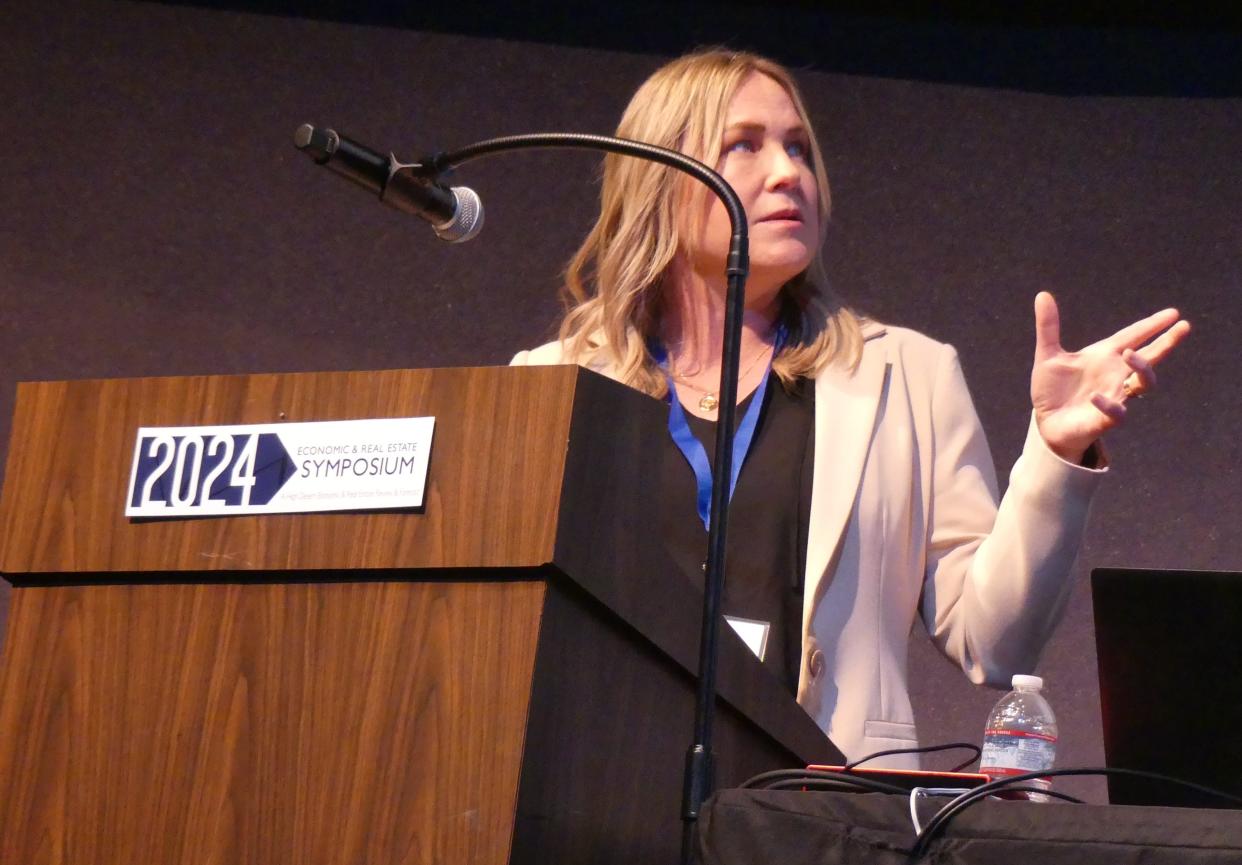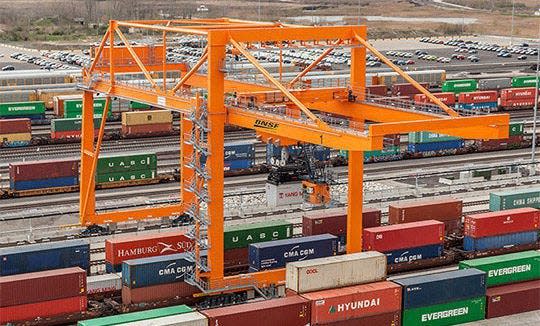State could derail BNSF’s $1.5 billion Barstow International Gateway, potential benefits

This story is the first in a series covering the 11th annual High Desert Economic and Real Estate Symposium & Forecast.
Nearly 400 people gasped in unison when BNSF Executive Director of Public Affairs Lena Kent dropped a bombshell about the company’s proposed $1.5 billion, state-of-the-art Barstow International Gateway.
During the 11th annual High Desert Economic and Real Estate Symposium & Forecast, Kent shared the potential benefits of the project and how a new rule by the California Air Resource Board could derail the entire project.
Kent also asked the audience to join an online campaign to save the Barstow International Gateway.
Hosted by Coldwell Banker Commercial, Kent was one of the many local, state and national leaders who delivered a goldmine of information during Thursday’s event at the Victor Valley College Performing Arts Center in Victorville.

Barstow International Gateway
Considered the largest rail facility in North America, the Barstow International Gateway will allow the direct transfer of shipping containers from ships at Los Angeles and Long Beach ports to trains for transport through the Alameda Corridor onto the BNSF mainline up to Barstow.
Once containers reach Barstow, they’ll be processed using cargo-handling equipment powered by clean energy, and then staged and built into trains moving east via BNSF’s network across the nation.
The project was announced in October 2022 at the city of Barstow’s 75th anniversary celebration. Since that announcement, Kent and BNSF officials have met with 100 key community leaders.
The new facility is expected to bring nearly 20,000 direct and indirect jobs to the High Desert, reduce highway and port congestion, and maximize rail and distribution efficiency regionally and across the U.S. supply chain.
“We believe that there’s a lot of people that are now currently driving down the hill to work,” Kent said. “It’s our goal to see those people staying up here in the High Desert.”
Local leaders said the influx of new BNSF employees is expected to create a commercial, retail, and services boom, along with a need for home construction.
However, new legislation could put a pause on the project, according to Kent.
“We let the state know if that were to go through and be implemented, BNSF would not be able to build this project — finances would not be feasible and we don't even know how much we'd be able to operate in the state of California," Kent said.

All-electric locomotives
Kent explained that a new rule by the California Resources Board (CARB) calls for BNSF to have all-electric locomotives by 2035.
“I hate to tell everybody this, although we’ve been doing our best to test out electric locomotives, we do not have an electric locomotive that works,” Kent said. “It’s an impossible task for us to be able to do.”
She also added that by 2030, BNSF’s locomotives that are 23 years or older can't operate in the state, “Even if they’ve been re-manufactured and they have a brand new engine in them.”
“The final kicker is, starting in 2026, both BNSF and Union Pacific will be required to put up to $800 million each year into a fund that CARB will manage, and when electric motives are available to be purchased, they’ll be able to go out and purchase them.”
The California Resources Board has asked the Environmental Protection Agency to allow implementation of its “In-Use Locomotive Rule,” a first in the nation.
Under the direction and authority of the California Legislature, the California Air Resources Board is tasked with developing and adopting specific rules and regulations needed to achieve healthful air quality, state officials said.
BNSF gave the followings reasons as to why the all-electric legislation could be harmful to the industry:
The California Resources Board rule ignores the interconnected nature of railroad operations regulated at the federal level to promote interstate commerce.
The national supply chain depends on efficient rail movement.
Technology isn’t ready for commercial deployment; not clear when it will be.
Insufficient power for electric locomotives
Campaign to save the BNSF Barstow project
The Environmental Protection Agency is considering the rule and accepting public comment.
Kent asked audience members to join the online campaign to save the project by submitting a comment by April 22 at https://p2a.co/UjHlkq4.
The BNSF campaign tells the Environmental Protection Agency, the California Resources Board and elected leaders to reject the “ineffective and unachievable patchwork approach to locomotive regulation and support more collaborative measures that accelerate commercial viability of lower- and zero-emission locomotives.”
For more information about how the California Resources Board and its possible effect on the rail industry, visit the Association of American Railroads at aar.org/issue/carb.
Daily Press reporter Rene Ray De La Cruz may be reached at 760-951-6227 or RDeLaCruz@VVDailyPress.com. Follow him on Twitter @DP_ReneDeLaCruz
This article originally appeared on Victorville Daily Press: State could derail BNSF’s $1.5 billion Barstow International Gateway

